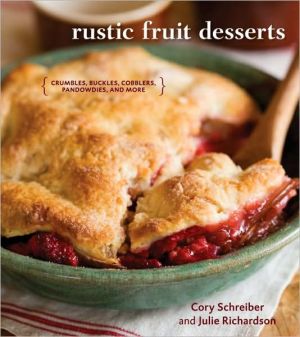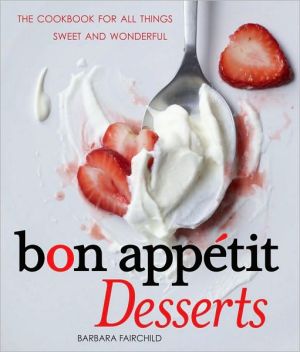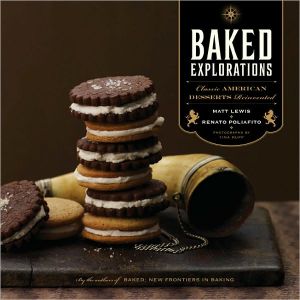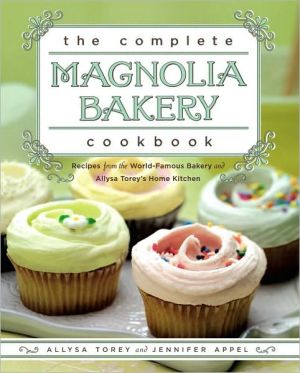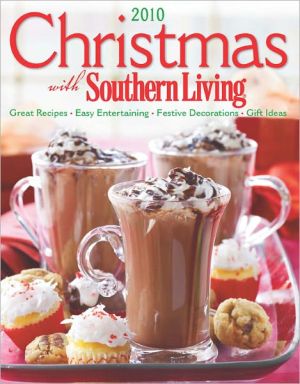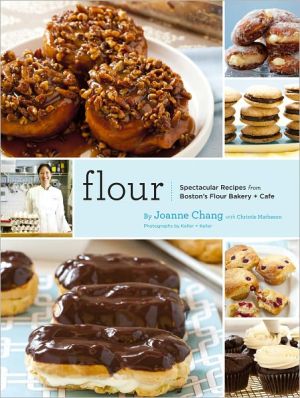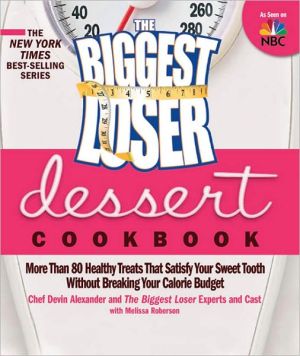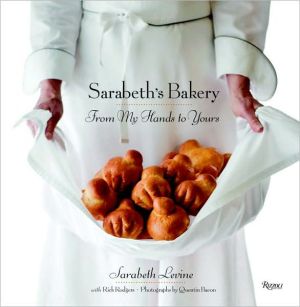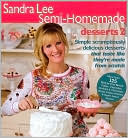Rustic Fruit Desserts: Crumbles, Buckles, Cobblers, Pandowdies, and More
An early fall cobbler with blackberries bubbling in their juice beneath a golden cream biscuit. A crunchy oatmeal crisp made with mid-summer’s nectarines and raspberries. Or a comforting pear bread pudding to soften a harsh winter’s day. Simple, scrumptious, cherished–these heritage desserts featuring local fruit are thankfully experiencing a long-due revival.\ In Rustic Fruit Desserts, each season’s bounty inspires unique ways to showcase the distinct flavor combinations that appear...
Search in google:
An early fall cobbler with blackberries bubbling in their juice beneath a golden cream biscuit. A crunchy oatmeal crisp made with mid-summer’s nectarines and raspberries. Or a comforting pear bread pudding to soften a harsh winter’s day. Simple, scrumptious, cherished–these heritage desserts featuring local fruit are thankfully experiencing a long-due revival.In Rustic Fruit Desserts, each season’s bounty inspires unique ways to showcase the distinct flavor combinations that appear fleetingly. James Beard Award—winning chef Cory Schreiber teams up with Julie Richardson, owner of Portland’s Baker & Spice, to showcase the freshest fruit available amidst a repertoire of satisfying old-timey fruit desserts, including crumbles, crisps, buckles, and pies.Whether you’re searching for the perfect ending to a sit-down dinner party or a delicious sweet to wrap up any night of the week, these broadly appealing and easy-to-prepare classics will become family favorites. Cory Schreiber is the founder of Wildwood Restaurant and winner of the James Beard Award for Best Chef: Pacific Northwest. Schreiber now works with the Oregon Department of Agriculture as the Farm-to-School Food Coordinator and writes, consults, and teaches cooking classes in Portland, Oregon.A graduate of the Culinary Institute of America, Julie Richardson grew up enjoying the flavors that defined the changing seasons of her Vermont childhood. Her lively small-batch bakery, Baker & Spice, evolved from her involvement in the Portland and Hillsdale farmers’ markets. She lives in Portland, Oregon. The New York Times - Christine Muhlke …more oozy scrumptiousness on a French linen towel, via Portland, Oregon's Cory Schreiber and Julie Richardson…Their Rustic Fruit Desserts: Crumble, Buckles, Cobbler, Pandowdies, and More is a seasonal mini-bible that goes beyond basics.
Cory’s Perspective\ \ I first met Julie Richardson at the Portland Farmers Market in 1998. Back then, she sold handcrafted baked goods at a small booth called Baker & Spice. A farmers market was the natural place for Julie to sell her pastries and pies, as she made them with seasonal, locally grown fruit. Her rustic desserts were deliciously irresistible, and I became far too familiar with almost all of them.\ Given the devoted Baker & Spice following that lined up in droves every Saturday morning, rain or shine, (this is Portland, after all) to eat a breakfast pastry or buy a dessert to go, Baker & Spice eventually outgrew its farmers market booth. It now has a home as a retail bakery in the Hillsdale community of southwest Portland. Even though Baker & Spice is no longer at the farmers market, Julie’s seasonal approach is still a mainstay of her baking. The bakery is committed to local foods and seasonal products, and its repertoire of classic fruit desserts, from pies and pandowdies to cobblers and crumbles, changes throughout the year to reflect the freshest fruits available.\ In the Pacific Northwest, we are lucky to have a wide variety of seasonal fruits grown by small-scale farmers. This creates an abundance of delicious choices that can be baked into a vast selection of fruit desserts—much like the ones that keep customers queued up at Baker & Spice. No wonder Julie and her family have made Oregon their home! Julie grew up in rural Vermont, where orchards and berry fields were part of the summer landscape of her childhood. Turning fruit into dessert came naturally to her long before she engaged in professional baking.\ This book combines Julie’s knowledge of baking and my knowledge of Pacific Northwest fruits. I have cooked professionally for more than three decades, and at least half of my career has involved cooking in the Pacific Northwest. My most formative food memories are from Oregon, and I share Julie’s passion for the quality of our fruit. I conjure up the seasons by thinking about various fruit desserts I have enjoyed: for autumn, it is a cobbler with blackberries bubbling in their juices beneath a golden cream biscuit; in the dead of winter, a comforting pear bread pudding made with brioche and lots of vanilla; for spring, a tart rhubarb compote over a scoop of vanilla ice cream; and for summer, a crunchy oatmeal crisp bursting with midsummer’s sweet nectarines and raspberries.\ Deciding what dessert to make on any given day is a wonderful process. You will find the dessert recipes in this book quite versatile, allowing you to take advantage of fruit at the peak of its season. Your decision of what to make could be based on the fruit you see at a local fruit stand or whatever fruit you have available in your kitchen. The ingredients in your pantry may also help dictate what form your dessert takes. And do not forget to consider how much time you have to prepare your dessert, so you can enjoy the process and not feel rushed.\ Although I am familiar with the many varieties of fruit that grow in the Pacific Northwest, memorizing the differences between all the playfully named fruit desserts is beyond me. The desserts in this book fall into a number of categories, most of which are described below. Various regions of the United States have slightly different versions of these desserts, so my apologies if what I call a cobbler is what you call a slump, or vice versa.\ A pie is a dessert with a filling (in this case, fruit) with a bottom crust and an optional top crust. Pies with both a bottom and a top crust are often referred to as a “double crust.” Hand pies are a signature item at Baker & Spice; these individual pocket pies have pie filling in a flaky crust that is folded over and crimped shut.\ Close relatives of the pie include the tart and the galette. A tart is a pie without a top crust; the fruit filling can be either fresh or cooked, and often it is coupled with another sweet, creamy filling. A galette is a rustic, free-form tart that does not require a pan.\ A cobbler is a deep-dish fruit pie. It has a dense pastry on top (usually a sweet cream biscuit crust) and a fruit filling, with no crust beneath. In some versions, the crust completely covers the fruit, while other versions have a dropped-biscuit topping that leaves some fruit exposed.\ A grunt, or slump, is more common in New England than in the Pacific Northwest. This dessert is similar to a cobbler but is usually cooked on top of the stove. In some parts of New England, it is a steamed pudding with berries.\ A crisp or a crumble is a baked fruit dessert with a streusel topping. The crumb topping is traditionally made with butter, brown sugar, flour, and spices. Nuts and oats, and even bread crumbs and crushed cookies, can be added to the topping. The crumb topping is scattered over the fruit and usually melts into it.\ A betty features fruit that is layered between or on top of diced bread cubes—anything from basic white bread to brioche to challah to day-old baguette. In some parts of the country, a betty is made like a crisp, only with buttered bread crumbs (and no nuts or oats) as the streusel.\ A pandowdy is a deep-dish dessert that can be made with a variety of fruit. The topping is a crumbled biscuit, except the crust is broken up during the baking process and pushed down into the fruit to allow the juices to come through. Sometimes the crust is on the bottom and the dessert is inverted before serving.\ A buckle has a cake batter poured in a single layer, with berries added to the batter. It is often made with blueberries because the berries sink yet keep their shape in the batter. Once baked, the cake has a “buckled” appearance. Think of a buckle as halfway between a cake and a fruit crisp. Buckles are great for breakfast!\ A teacake is a simple cake akin to a coffee cake. Moist and tender, it can be eaten with one’s fingers at tea time or any other time. Teacake packs well for picnics.\ A fool is a simple summer dessert made of fruit at its peak layered with whipped cream.\ A trifle is a visually stunning dessert made by layering cake, thick cream, and fresh fruit. Some trifles also contain a small amount of alcohol (such as Cointreau, rum, or kirsch).\ Our book offers an informative approach to fruit desserts. Each chapter introduces you to a seasonal selection of fruit, and the recipes include headnotes to help you learn more about the dessert. We have also included kitchen hints to educate you about baking techniques that make baking easier. Near the end of the book you will find a pantry section with recipes we refer to throughout this book, as well as a page of resources.\ Happy baking!\ Julie’s Philosophy and Baking Tips\ \ I am not a fussy baker. I believe that simple movements and quality ingredients bring desserts to their highest potential. Full-flavored fruits in season need little coaxing from sugar and flavorings to find their place on your dessert table. Here are a few simple guidelines I use.\ Weights and Measures\ For accuracy, it is important to use the correct vessel to measure ingredients. Or better yet, treat yourself to an electronic scale and weigh your ingredients for the best results. Over time, ingredients like flour, cocoa, and confectioners’ sugar absorb moisture and get packed down, which means that measuring cups are a less-than-accurate tool for measuring these ingredients. Investing in a small digital scale that displays pounds and ounces will help you measure ingredients with the same accuracy as a professional. Here are measurement guidelines for specific ingredients.\ Fruit: Because fruit comes in all different colors, shapes, and sizes, I rely on a weight measurement for prepped fruit when determining how much fruit should be used in a recipe. If the recipe calls for a certain weight or cup measurement of fruit, the recipe assumes you have already peeled, cored, trimmed, stemmed, hulled, or otherwise prepped the fruit before weighing or measuring it. Therefore, we suggest you buy a larger weight than the recipe indicates as you will lose some weight or volume in the process of prepping the fruit. The number of apples, pears, etc. is merely an estimate. Plus, you can always snack on any extra fruit as you prepare the dessert.\ Dry ingredients: Measuring cups for dry ingredients come in metal or plastic (I prefer metal) and usually come in increments of 1⁄4, 1⁄3, 1⁄2, and 1 cup. I use the fluff, scoop, and swoop method when I measure dry ingredients: slightly fluff up the ingredient (especially flour), scoop up the ingredient so that it overflows the cup, then use a straight edge, such as the back of a knife, to sweep off (or swoop) the excess. When measuring brown sugar, pack the sugar into the cup, then carefully sweep off any excess. Measuring cups with a pour spout are for measuring liquid ingredients and should never be used to measure dry ingredients.\ Wet ingredients: Use a glass measuring cup on a flat surface.\ Oven Temperature\ I used a conventional gas oven for all of the baked recipes in this book. I suggest buying an inexpensive oven thermometer to keep in your oven at all times because the oven thermostat is not always reliable. A convection oven would be fantastic for the buckles, shortbread cookies, and cakes. If you use one, reduce the oven temperature by 25 degrees and keep a close eye on your dessert, as convection ovens bake more quickly. For pies, cobblers, crisps, and pandowdies, it is best to use the conventional heating method and have the heat come from the bottom. You know your oven the best (where the hot spots are and where to put your baked goods to get the best color), so take our baking times as suggestions and focus on the recipe’s telltale doneness cues as the accurate measure of when to take the dessert out of the oven.\ Preheated baking stones are great for baking a pie, cobbler, tart, crisp, or galette because they retain their heat, allowing the dessert to bake from the bottom up. This process creates such wonders as a golden (not soggy) bottom crust. Stones need a head start, so preheat them at least 45 minutes before your dessert goes into the oven.\ When baking a pie, cobbler, or crisp, just place your pan or dish directly on the stone. I like to make a foil tray with an edge, and then lay it beneath the pie to collect any juice that may bubble over; this is unnecessary for a cobbler or crisp. For a galette, I find it easiest to keep it on a baking sheet and place the sheet directly on the stone.\ Freezing\ The freezer is the pastry baker’s dear friend, as so many products can be made ahead of time then used for easy last-minute desserts. When well wrapped, many raw components such as pie pastry, short dough, crisp or crumble toppings, and shortbread cookie dough can be stored for up to 3 months without a problem. So feel free to double or triple the recipes and keep some extra available for the next dessert that you make. Be sure to carefully wrap, label, and date anything you tuck into the freezer. I also freeze my whole, unbaked pies, which I feel makes them even better! Popping a pie in the oven directly from the freezer means your butter and fruit will take longer to melt, which allows the pie crust to bake up before the filling and creates a lovely golden bottom crust and a flakier pastry. You will need to increase your baking time by 15 to 25 minutes for a frozen pie.\ I also freeze already-baked products, including shortbread cookies (which even taste great frozen), chiffon cake, Bundt cakes, and buckles. Again, do not forget to carefully wrap, label, and date the baked products before freezing them. They will not keep as long as unbaked products, so only freeze them for a month at most.\ Baking Dish Equivalents\ We suggest ideal size equipment and baking vessels in each recipe, but if you do not have the precise pan, use the nearest equivalent based on the type of dish. Just be aware that the baking time will need to be adjusted when using a different size pan.\ 9 by 11⁄4-inch pie pan = 4 cups or 1 quart\ 9 by 11⁄2-inch pie pan = 5 cups or 11⁄4 quarts\ 91⁄2 by 2-inch deep-dish pie pan = 7 cups or 13⁄4 quarts\ 8 by 8 by 2-inch square pan = 8 cups or 2 quarts\ 9 by 9 by 11⁄2-inch square pan = 8 cups or 2 quarts\ 9 by 9 by 2-inch pan = 10 cups or 21⁄2 quarts\ 61⁄2 by 31⁄2-inch small Bundt pan = 51⁄2 cups or 11/3 quarts\ 9 by 3-inch Bundt pan = 10 cups or 21⁄4 quarts\ 10 by 31⁄2-inch Bundt pan = 12 cups or 3 quarts\ 81⁄2 by 11 by 2-inch rectangular baking dish = 8 cups or 2 quarts\ 9 by 13 by 2-inch rectangular baking dish = 12 cups or 3 quarts\ 121⁄4 by 83⁄4 by 21⁄2-inch oval baking dish = 8 cups or 2 quarts\ 9 by 2-inch round cake pan = 8 cups or 2 quarts\ 91⁄2 by 21⁄2-inch springform pan = 10 cups or 21⁄2 quarts\ 9 by 3-inch springform pan = 11 cups or 23⁄4 quarts\ The Baker’s Battery\ High-quality stainless steel chef’s knife High-quality stainless steel paring knife Digital scale Set of measuring spoons Set of dry measuring cups\ 1-cup liquid measuring cup\ 2-quart liquid measuring cup Wooden spoons Whisk Rubber spatula Plastic scrapers Bench scraper Sifter Fine-mesh sieve Half-size sheet pans or baking sheets Pie pans Tart pans, including one with a removable bottom Pie crust shield\ 9-inch square pan\ 9-inch round pan\ 9 by 13-inch baking pan Bundt pan\ 2-quart and 3-quart baking dishes\ 9-inch cast-iron skillet Custard cups (also called ramekins)\ Rolling pin Offset spatula Microplane for zesting citrus Parchment paper or Silpat baking mat Metal mixing bowls Pastry brush Good oven mitts Food mill Electric mixer (preferably a stand mixer)\ Food processor Spice grater\ What is my favorite tool? Simply, my hands! What better tool does a baker need? They are always there, they need no special cleaning other than some hot water and soap, do not require electricity, and they are so versatile. They can cut, press, roll, knead, and shape . . . it is a little messy at first, but once you start using your hands, you will realize what fun it is! For many of the recipes, I recommend rubbing the dry ingredients together with your hands; this step ensures that any cornstarch is fully incorporated into the dry ingredients before any wet ingredients are added.\ The Pastry Kitchen’s Cupboard\ What is my favorite ingredient? I have two: unsalted high-fat butter (also called “European-style” butter) and fine sea salt. While it may seem odd to insist on butter that is unsalted and then add salt anyway, it makes a difference because it allows me to carefully control the flavor of what I bake. I want to choose when I add salt and how much salt is part of my product . . . and none of my baked goods go without it! Even if it is just a pinch, tad, morsel, or whatever you want to call it, salt is the ingredient that brings it all together. And I choose sea salt over all of the other salts available because of its pure clean flavor; I also prefer fine (not coarse) sea salt because the crystals need to dissolve easily in baked goods.\ Unsalted butter Sugars: granulated, brown (I use light in most of my recipes unless I want a deeper molasses flavor, in which case I use dark), and confectioners’\ Flours: all-purpose flour, cake flour, and rice flour (Use the latter forrolling out pastry and making shortbread.)\ Vanilla extract and vanilla beans Fine sea salt (Taste it compared to other salts; it is just better.)\ Fresh spices (Buy small quantities in bulk from busy stores to help ensure that they are fresh.)\ Nuts (Store them in an airtight container in the freezer for freshness.)\ Fresh ripe produce (Your local farmers market is the best source.)\ Fresh dairy products and large eggs Leaveners (Buy baking soda and baking powder annually if not more often; they lose their strength when they get old.)\ Cocoa: Dutch-processed and natural Grains: oats, cornmeal, and so on\ I believe in the integrity of each ingredient. Do not be afraid to taste them individually: pure vanilla, granulated cane sugar, unbleached flours, unsalted “European-style” butter, sea salt, and fruits. At the peak of their flavor, these are the components that will bring your desserts to life.
Acknowledgments - xIntroduction - 1SpringApple and Rhubarb Pandowdy 16Rhubarb Fool - 18Rhubarb Compote Two Ways - 21Rhubarb and Bing Cherry Brown Betty - 22Sour Cherry Cobbler - 23Rhubarb Cream Cheese Pie with Fresh Strawberries - 26Rhubarb Buckle with Ginger Crumb - 27Fresh Strawberry and Ricotta Tart - 28Rhubarb, Oat, and Pecan Crumble - 30Boozy Dried Cherry, Chocolate, and Hazelnut Bread Pudding - 31Upside-Down Sweet Cherry Cake - 32Lemon Buttermilk Rhubarb Bundt Cake - 36Cherry Almond Bars - 37Strawberry Shortcake - 38SummerRaspberry Red Currant Cobbler - 46Double-Crusted Pluot Crisp - 49Raspberry Cream Brown Betty - 50Stone Fruit Tea Cake - 52Apricot Raspberry Cobbler - 53Nectarine, Boysenberry, and Almond Crisp - 55Lemon Blueberry Buckle - 58Vanilla-Spiked Plum Galette - 61Marionberry Pie - 62Blueberry Cobbler with Cornmeal Biscuit - 63Gingered Peach and Blackberry Pandowdy - 64Stone Fruit Slump - 66Raspberry Fool - 69Caramel Peach Grunt - 70Stone Fruit Upside-Down Cornmeal Cake - 72Summer Fruit Trifle - 74Tayberry Oat Buckle - 77FallApple Blackberry Pie - 84Maple Apple Dumpling - 86Gingered Pear and Raspberry Pandowdy - 88Grape Galette - 91Apple and Black Currant Brown Betty - 92Huckleberry Buckle with Vanilla Drizzle - 93Quince and Apple Brown Butter Tart - 94Fig and Mixed-Color Raspberry Crumble - 96Pumpkin Custard with Cookie Crumb Crust - 98Pear Cobbler with Shingled Hazelnut Biscuits - 100Upside-Down Pear Chocolate Cake - 102Caramel Apple Steamed Pudding with Ginger - 105Fig and Honey Cream Galette - 107WinterPear Sauce - 115Pear Sauce Bundt Cake with Pear Brandy Butter Glaze - 116Cranberry Buckle with Vanilla Crumb - 118Cranberry Upside-Down Almond Cake - 120Apple Cranberry Oat Crumble - 122Apple Custard Pie with Orange - 123Mimi’s German Apple Cake - 124Apple Cobbler with Cheddar Cheese Biscuit - 126Deep-Dish Winter Fruit Pie with Walnut Crumb - 128Stewed Fruit and Chantilly Cream with Vanilla Bean Shortbread - 131Olive Oil Citrus Cake - 132Lemon Sponge Tart - 135Caramelized Pear Bread Pudding - 136Apple Crisp with Brandy-Soaked Currants - 138Apple Pandowdy - 140Grandma Freeman’s Jam Cake with Brown Sugar Rum Glaze - 142PantryChantilly Cream - 145Crème Fraîche - 146Vanilla Bean Ice Cream - 146Berry Ice Cream - 147Basic Jam - 148Vanilla Sauce - 149Vanilla Crumb - 149All-Butter Pie Pastry - 151Short Dough - 152Galette Dough - 153Vanilla Bean Shortbread - 155Vanilla Chiffon Cake - 156Sources - 158Index - 159
\ Christine Muhlke…more oozy scrumptiousness on a French linen towel, via Portland, Oregon's Cory Schreiber and Julie Richardson…Their Rustic Fruit Desserts: Crumble, Buckles, Cobbler, Pandowdies, and More is a seasonal mini-bible that goes beyond basics.\ —The New York Times\ \
